Praktica FX Film Camera Review
Praktica FX is an interesting 35mm SLR camera. Most people used to SLR cameras will expect to look through an eye-level viewfinder to "see through the lens". With the help of pentaprism ( or pentamirror ) you see the world exactly as you normally see the world. Praktica FX is not a camera like that. It's still an SLR but there is no pentaprism and there is no eye-level viewfinder. Instead you get a waist-level viewfinder typically found in TLR cameras. The removal of pentaprism also makes it look more like a rangefinder than a typical SLR.
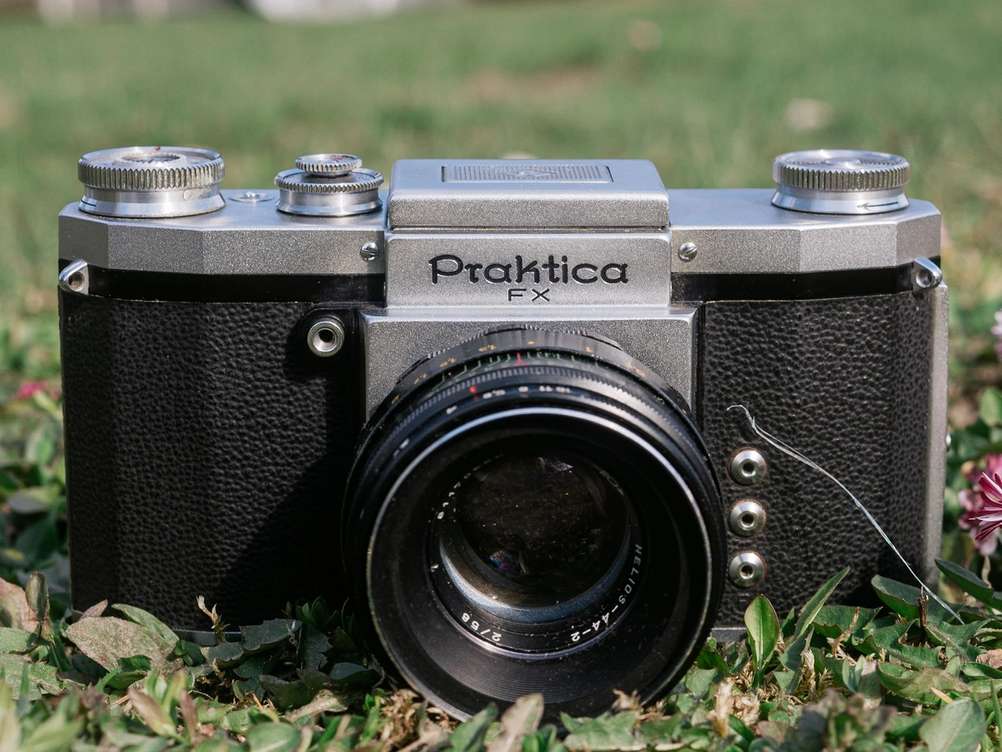
Praktica FX catches your interest. It often came with a Zeiss Biogon 58mm f2 lens. I don't have it but I have the next best thing — Helios 44 which is a copy of Biogon.
Praktica FX was made in East Germany by KW ( Kamera-Werkstätten ). Praktica cameras aren't the most desireable cameras out there but they did make one of the first SLRs in Germany - Praktiflex. It was definitely one of the more affordable ones. Praktica FX is not that much different from Praktiflex. Praktiflex was renamed to Praktica at some point but it still fits under the same lineage. In fact, there was a limited run of Praktiflex FX branded cameras released that were the same as Praktica FX.
You can get Praktica FX without too much trouble for $10 - $50 and it wouldn't be surprising if it came with a lens. I was looking for one of the first Praktiflex cameras but they cost quite a bit more so I ended up with Praktica FX. Mostly by accident as one was listed in my country. It didn't come with a lens but Praktica FX has an M42 screw mount so there is a huge world of lenses out there. I have a fair few myself. Why was I looking for Praktiflex? All I can give you is a slight hint. I am fondling another similar style camera right now that is based on Praktiflex. That camera will remain a mystery for now but it's the reason I was looking for Praktiflex. To find an origin story.
Design & Build Quality
Praktica FX doesn't have a particularly iconic look but it looks nice. Very simple and even brutalist in some ways. I prefer the look of a rangefinder so a waist-level SLR design speaks to me more than a regular SLR design.
The build quality is closer to soviet cameras than it is to West German cameras. It doesn't feel cheap. It feels rudimentary and tank-like. You can tell that it's made from multiple parts instead of being sculpted from a single element. At the same time it's rather heavy. Very reminiscent of Zenit E, although slightly better. I'm not sure whether there were many quality control issues. My guess would be that Praktica FX cameras were more consistent than soviet cameras but it's a pure guess.
My copy is in need of a CLA. The shutter is sticky on slower speeds and there are some light leaks. I still managed to go through a full roll though. I can't blame these issues on build quality as many old cameras are in need of a CLA.
The controls on the camera feel like the camera looks and feels. Simple and without any flare. Shuter advance is through a wheel, not a lever. You can feel the gears turning as you rotate this wheel. Shutter speed control is of the lift-and-rotate kind. It's light to the touch and there is little feedback. There is a button to open the viewfinder door which brings the first door up in a very springy nature. The second door remains shut and you have to apply quite a bit of force to open it. Same when closing it. Not sure if it's normal or that part needs a CLA as well.
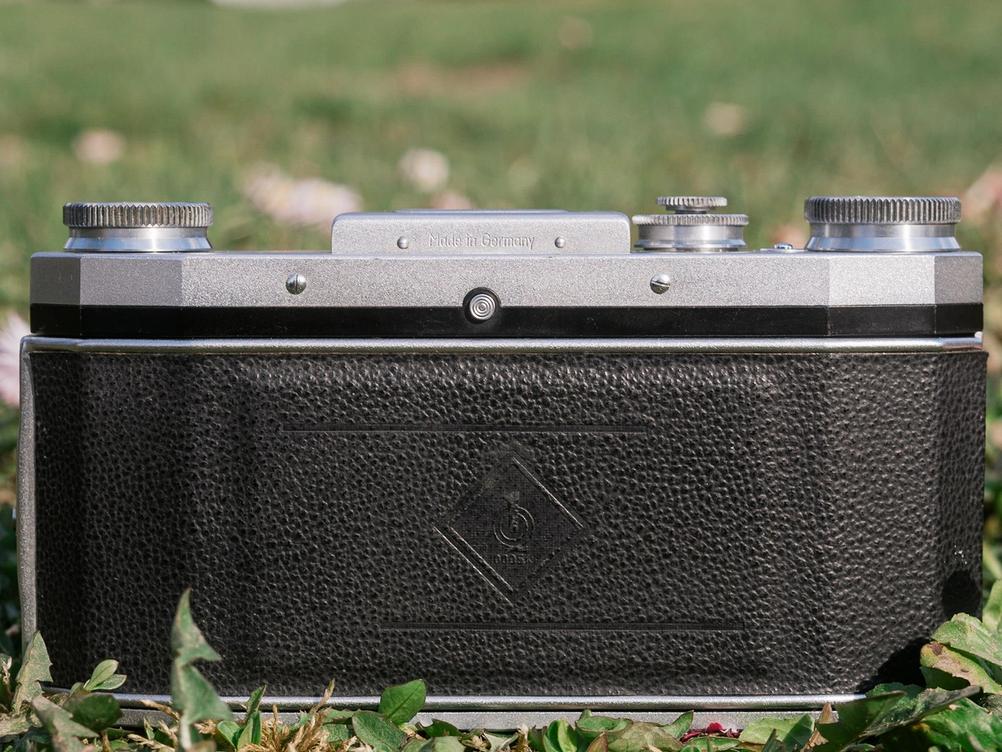
Back of the camera is very simple with no controls apart from one. That little, circular button in the top middle is the button that opens the viewfinder door.
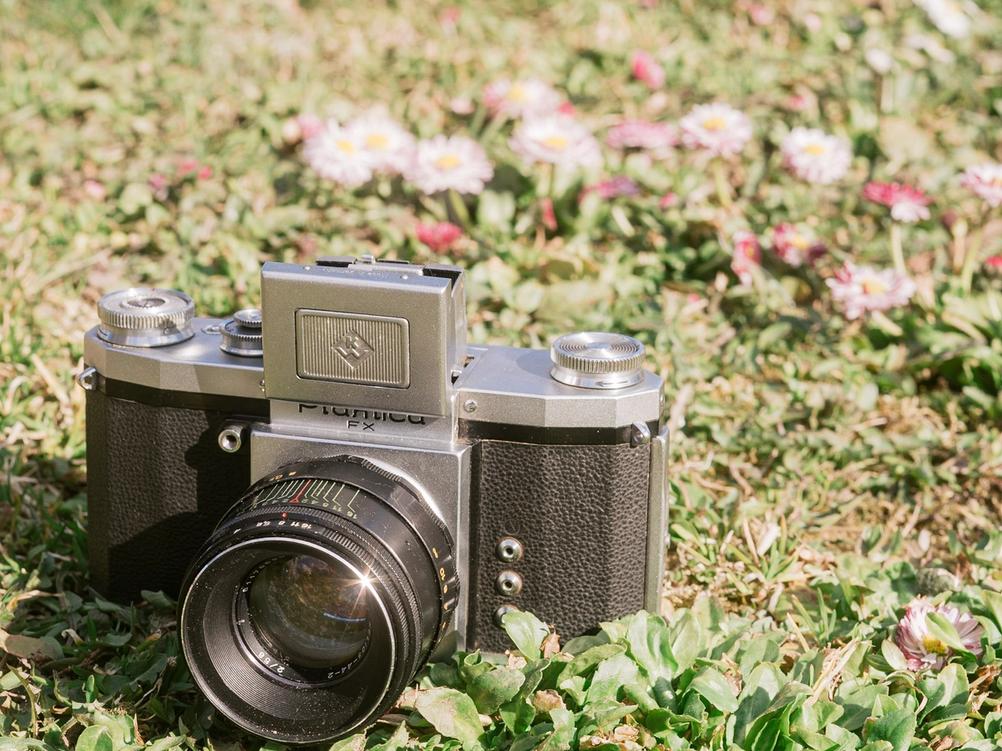
Praktica FX looks quite cool with the viewfinder door opened as well.
One element that isn't light to the touch is the shutter. You and the people around you will know that the shutter was released. Seismic sensors might capture a small disturbance as well. There is a real "clunk" sound when the shutter is released. Most of the sound comes from the mirror which is surprising as it's not an instant return mirror.
Functionality
Praktica FX is an old, mechanical camera that offers only the most basic of functions.
Viewfinder
The most interesting aspect of the camera is the waist-level viewfinder. As much fun as it is to use a waist-level viewfinder — there are some significant drawbacks.
It's not the brightest viewfinder. It's all OK during the day but indoors and in dimmed light situations focussing can be difficult. There are also no focussing aids. Only a good ol' ground glass. I don't mind that as it keeps the viewfinder clean.
You might be used to a spacious medium format waist-level viewfinder. This is not that. The viewfinder is not small but it's not as grand as on most medium format cameras.
And my biggest issue is that you pretty much have to forget about portrait orientation photos. I hadn't considered that taking portrait orientation photos would be difficult. My previous waist-level viewfinder experience includes only 6x6 medium format cameras. Everything is a square there. A 3:2 aspect ratio is not a square. Holding the camera in portrait orientation means that it's very difficult to see what's in the viewfinder. Unless you do very difficult gymnastics that might land you a spot for the olympics.

Even with all the issues with waist-level viewfinders it's hard to beat the feeling you get when looking through them.
A way around the portrait orientation shooting is to use the "sports finder" where you look through a small hole on the viewfinder gate. It won't help you focus and it will only approximate 50mm focal length but it can save you when portrait orientation is what's right at that moment. The "sports finder" is also useful if you're having trouble with the flipped left-to-right experience of waist-level viewfinders. I'm not much of a "sports finder" user myself.

Sports finder in action. It's very simple in its construction.
You also get a magnifier in the viewfinder that you can flip out to get the focus spot on. Or approximately spot on as it's not always easy to nail focus. Especially if the subject is moving.

Magnifier is an essential item when trying to achieve precise focus.
Other Things
There aren't too many other things. You get an exposure time dial that uses the older style shutter speeds. E.g. 1/100th of a second instead of 1/125th of a second. Fastest shutter speed is 1/500th and the slowest is half a second. To switch between the slow speeds ( starting from 1/25th of a second ) and faster speeds you need to rotate a smaller dial on top of the exposure time dial. Unless your camera has been CLA'd I wouldn't recommend messing with that. Slower shutter speeds are likely to stick on older cameras. There's also a bulb mode.
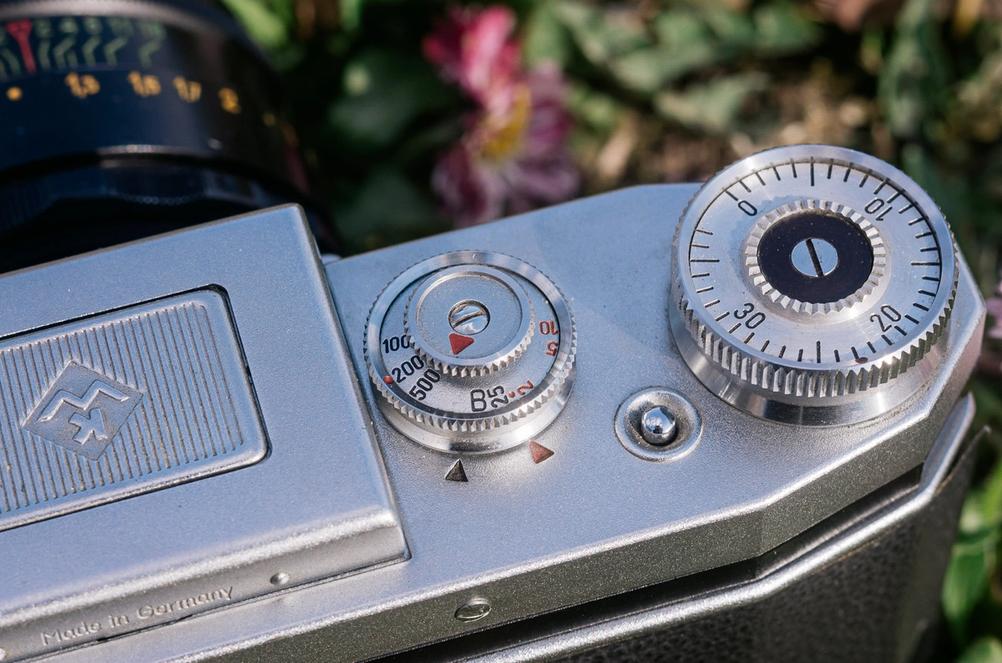
Aligning red arrow with the black arrow will activate faster speeds. Aligning red arrows will active slow speeds. You will hear clockwork ticking as you rotate the top dial.
The dial on the right advances film, cocks the shutter and counts frames.
Shutter button isn't on the top plate as it's common and instead it's next to the lens. It's a better position for it when using a waist-level viewfinder.
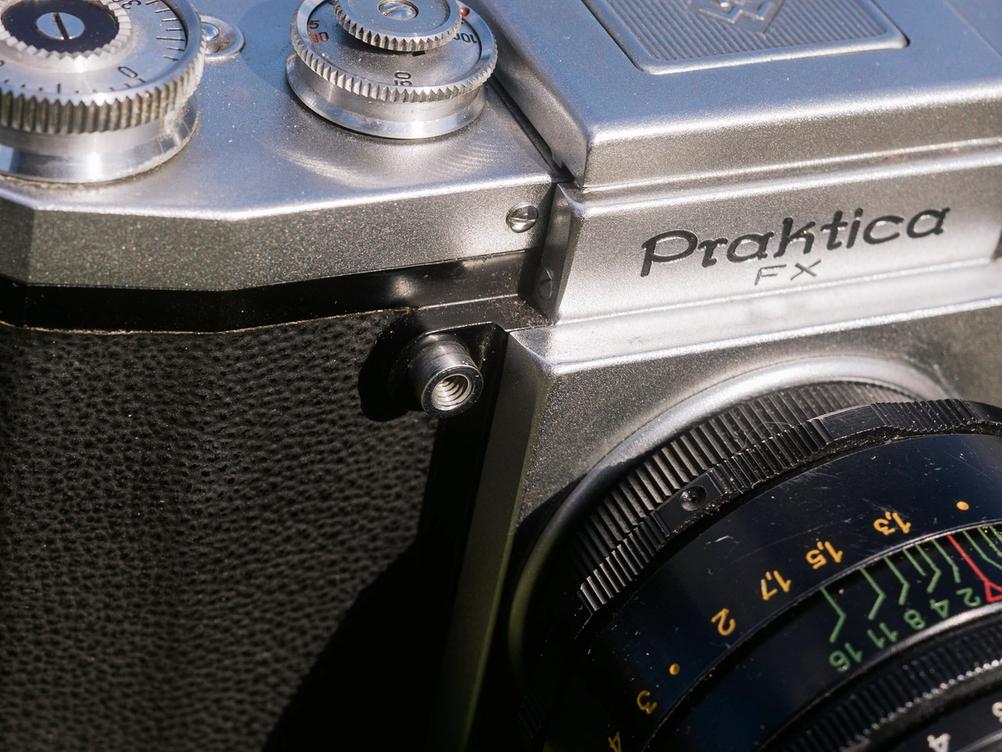
Although it may seem like a weird place for a shutter button, it works well for waist-level viewfinder cameras. You hold them differently than eye-level viewfiner cameras so your hands contact different parts of the camera.
There's a frame counter on top of the film advance wheel. You have to set / reset it manually.
Film loading is easy because the whole back comes off giving you plenty of access. At first I was surprised that the whole back came off. I thought it might be broken but it's like that by design.
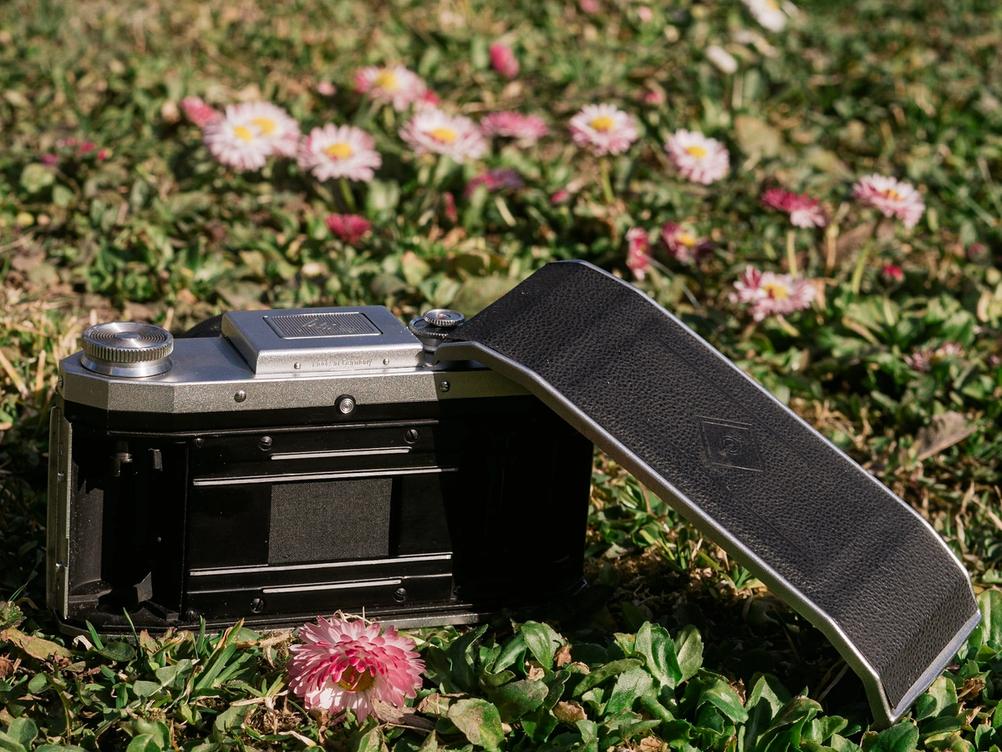
A back that comes off allows for easier film loading. Apart from if you're on the move in which case you will have to find a place for the back to not lose it.
I also have to praise the film rewind knob. It has a nice resistance and it doesn't spin to oblivion if you release it mid-rewind. Very cool.
Usability
It's often said that film photography slows things down. Using Praktica FX ( or other waist-level viewfinder SLRs ) slows things down even more, whether you want it or not.
The biggest cause of slowness is the viewfinder. It's simply not as easy to use as an eye-level viewfinder. Even the initial setup is longer. On a normal SLR you only have to put the viewfinder next to your eye. Here you have to knock and open the door to be able to see anything. Focussing and framing is a lot slower too. You have to focus, to focus ( haha! ). Medium format waist-level viewfinders are usable from the waist level. On Praktica FX you will want to bring it closer. You will also want to pull out the magnifier to ensure focus.
Since it's an older camera, there is no link between camera and aperture. And it's not a rangefinder. You will have to use preset or fully manual aperture. That means opening the lens up to focus and then closing it down to shoot. It's not something I have drilled in my brain so I shot wide open by accident at least 2 or 3 times.
It's also annoying that Praktica FX doesn't have an instant return mirror. Mirror will stay up after taking a photo and you have to cock the shutter to bring it back down. Since I'm not someone who cocks the shutter after taking a photo, it's another action I have to do before being able to see the scene through the viewfinder.
Finally the portrait orientation issue can be a painful one. I avoided taking photos like that with Praktica FX. Since I usually carry around more than one camera, I could use different cameras for portrait orientation shots.
Results
Camera doesn't play a part in the final image. Lens and film does all the work. Bla, bla bla... Here are some photos taken with Praktica FX.

- Camera
- Praktica FX
- Lens
- Valdai Helios-44M-5 58mm f2
- Film
- Ilford FP4+ EI200
- Development
- Kodak HC-110; Dilution B; 12
- Scanner
- Reflecta ProScan 10T
It's fair to say that my Praktica FX has a few light leaks. Not sure where they come from yet as the back seems to have a pretty tight fit.
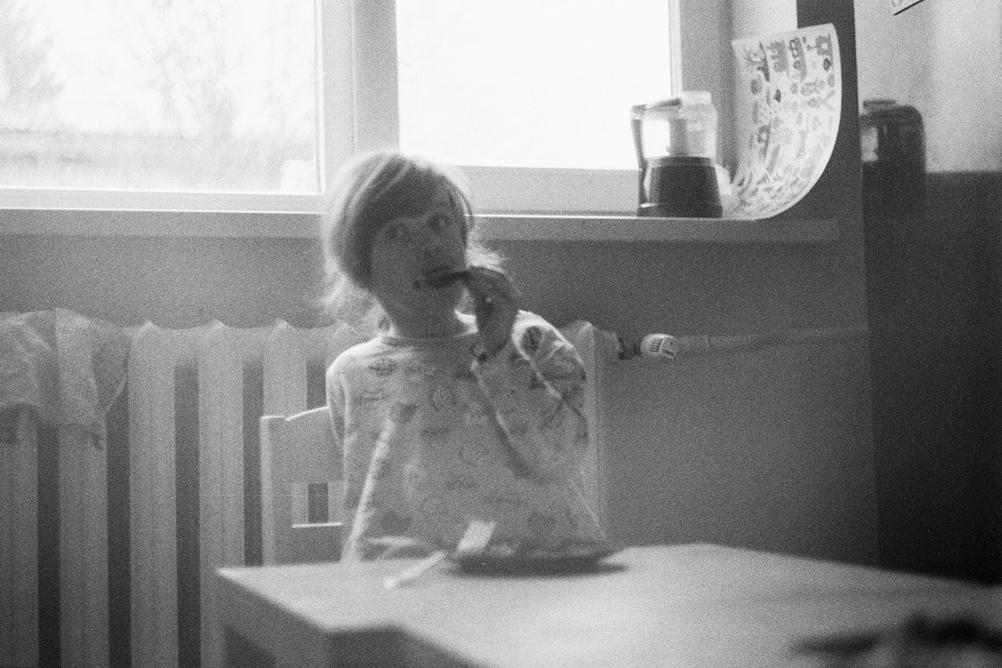
- Camera
- Praktica FX
- Lens
- Valdai Helios-44-2 58mm f2
- Film
- Ilford FP4+ EI200
- Development
- Kodak HC-110; Dilution B; 12
- Scanner
- Reflecta ProScan 10T
Focussing in darker areas is very difficult. What is not difficult is missing focus. As I have done here.

- Camera
- Praktica FX
- Lens
- Asahi Super-Multi-Coated Takumar 50mm f1.8
- Film
- Ilford FP4+ EI200
- Development
- Kodak HC-110; Dilution B; 12
- Scanner
- Reflecta ProScan 10T
Shifting your photography into a lower gear will make the viewfinder more usable.

- Camera
- Praktica FX
- Lens
- Asahi Super-Multi-Coated Takumar 50mm f1.8
- Film
- Ilford FP4+ EI200
- Development
- Kodak HC-110; Dilution B; 12
- Scanner
- Reflecta ProScan 10T
Taking photos of vegitables is perfectly doable with a waist-level viewfinder SLR. If anything it's easier this way.
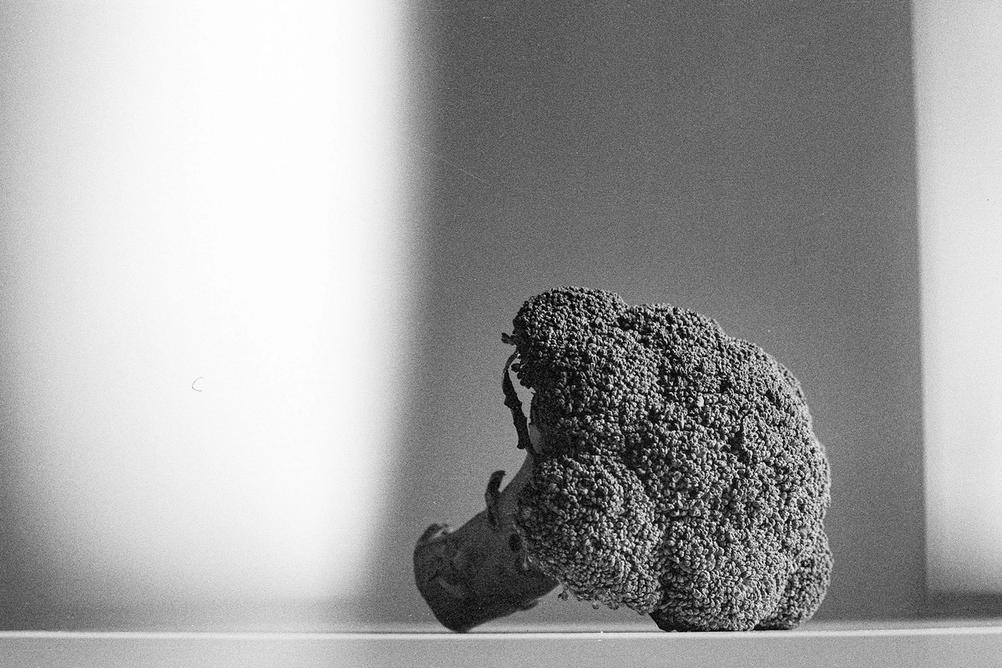
- Camera
- Praktica FX
- Lens
- Asahi Super-Multi-Coated Takumar 50mm f1.8
- Film
- Ilford FP4+ EI200
- Development
- Kodak HC-110; Dilution B; 12
- Scanner
- Reflecta ProScan 10T
Even the light leaks can improve the photography.
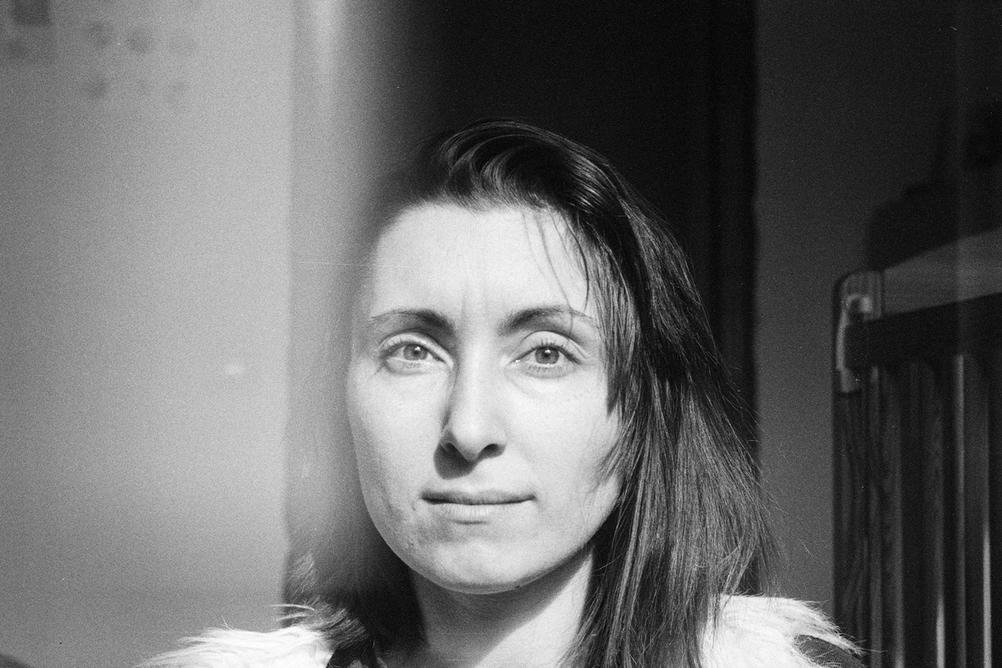
- Camera
- Praktica FX
- Lens
- Valdai Helios-44-2 58mm f2
- Film
- Ilford FP4+ EI200
- Development
- Kodak HC-110; Dilution B; 12
- Scanner
- Reflecta ProScan 10T
Critical focus on eyes is again something that's not easy to achieve. I have not achieved it here.
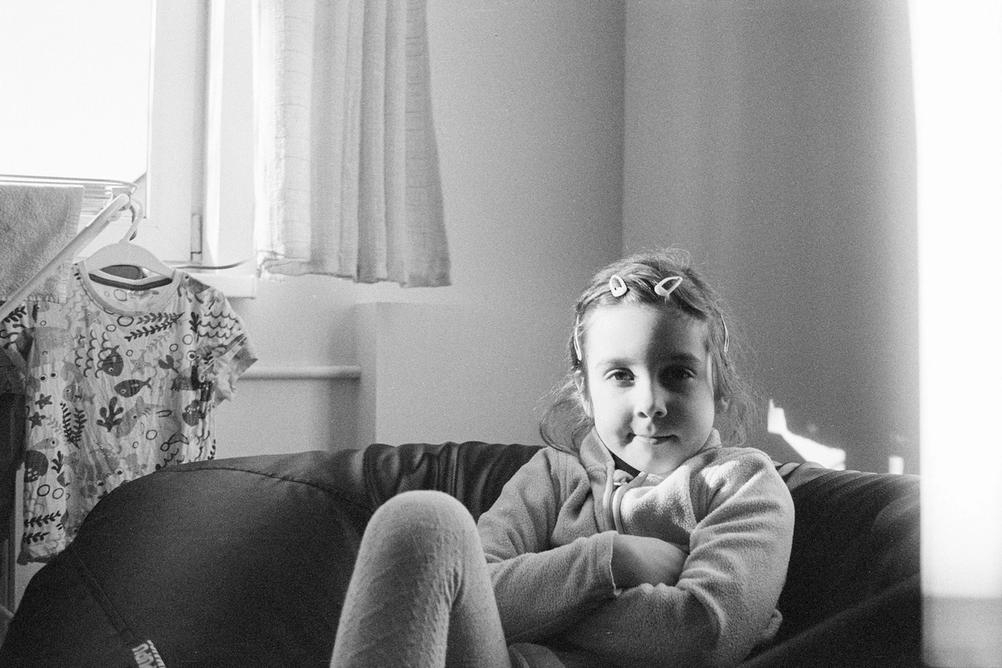
- Camera
- Praktica FX
- Lens
- Asahi Super Takumar 35mm f3.5
- Film
- Ilford FP4+ EI200
- Development
- Kodak HC-110; Dilution B; 12
- Scanner
- Reflecta ProScan 10T
To get around that you can use a wider and slower lens. Although slower lenses don't make focussing easier. Especially in daker conditions.

- Camera
- Praktica FX
- Lens
- Asahi Super Takumar 35mm f3.5
- Film
- Ilford FP4+ EI200
- Development
- Kodak HC-110; Dilution B; 12
- Scanner
- Reflecta ProScan 10T
Here I attempted to take a portrait orientation photo. You can see how well it went. The crooked nature kind of works here but taking portrait orientation photos is not something you can do with a waist-level viewefinder SLR.

- Camera
- Praktica FX
- Lens
- Asahi Super Takumar 35mm f3.5
- Film
- Ilford FP4+ EI200
- Development
- Kodak HC-110; Dilution B; 12
- Scanner
- Reflecta ProScan 10T
At the time this lens couldn't quite reach infinity. That problem has been sorted now.

- Camera
- Praktica FX
- Lens
- Valdai Helios-44-2 58mm f2
- Film
- Ilford FP4+ EI200
- Development
- Kodak HC-110; Dilution B; 12
- Scanner
- Reflecta ProScan 10T
Forget about moving subjects.
Final Words
Although I dumped on this camera quite a lot in this review — I find it weirdly enjoyable. It's fair to say that waist-level viewfinders bring some magic to the photo taking process. Even if they come with some big disadvantages.
The whole camera, although not built in the best possible way, feels nice in the hand. Combine that with the waist-level viewfinder experience and it's a camera that I want to take out when I see it. That means that it passes my test on whether it's a good camera for me.
All that said — I don't believe I will use this camera often. There is a camera that offers all of the benefits of Praktica FX but with less drawbacks. Reveal of that camera will come some time later in the year.
Does that mean that you shouldn't get it? If a camera of this type seems interesting to you then you should get it. Although there are better variants out there, they can cost many times more than what Praktica FX costs. Getting the waist-level experience doesn't have to cost a lot. It certainly doesn't with Praktica FX.
